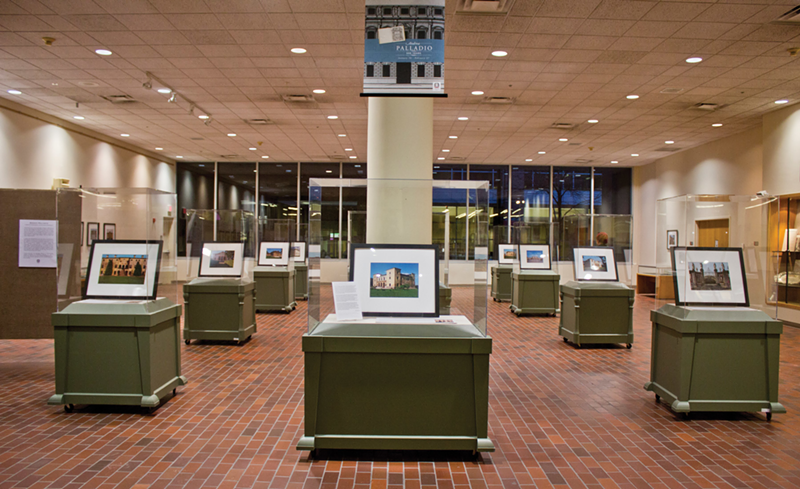Architectural buffs, by and large, have only good words to say about the 16th century Italian architect Andrea Palladio. His influence can perhaps be seen in your own neighborhood, especially if you live in Indian Hill, Hyde Park or the choicer places on the West Side — classical porticoes, Roman columns, symmetrical design and pure geometrical forms all reflect Palladio.
You can see where these ideas come from in the exhibition Andrea Palladio – 500 Years in the atrium on the Main Library’s first floor through Feb. 27.
Twenty-six relatively recent color photographs by Italian photographer and author Pino Guidolotti show residences designed by the architect five centuries ago.
These houses, now weathered but distinctly livable, have become as much part of the north Italian landscape as the trees in their immediate vicinity.
My family is rife with architectural buffs and we have seen a good many of the houses in Guidolotti’s photographs. We have even spent a week in one of them, the only one available for casual rentals, Villa Saraceno. (See landmarktrust.co.uk for rental info.)
We used it as a base to go look at other Palladio buildings, including many of the houses shown in Guidolotti’s well-executed photographs. Along with homes, Palladio also designed public buildings, but this exhibition is right to concentrate on the houses alone, giving us all the opportunity to relate to their timeless quality.
That timeless quality came about from Palladio’s own looking back. He was an artisan, apprenticed as a stone mason, whose talent as a stone worker and sometimes sculptor was seen by Gian Giorgio Trissino, an aristocrat who became the young man’s patron.
Trissino took Palladio to Rome to see the remarkable remains there, some by the Roman architect Vitruvius who had himself written a 10-volume book on architecture. In the course of these adventures, the stone mason’s name was changed from Andrea di Pietro, which incorporated his father’s name, to the classical-sounding Andrea Palladio.
Classicism was certainly vogue — it was, of course, the time that would come to be called the Renaissance — and his talents fit well with the added dignity of Palladio.
Back in northern Italy, in the Venice/Vincenza area, the local fellow who had been to Rome became in demand by well-to-do people who wanted a nice house. The earliest of those remaining, the Godi house, is one of the first photographs visitors to the exhibition will see.
It provides a benchmark, suggesting where private house architecture was coming from rather than where Palladio himself would take it. When we saw the house, now some years ago, it had become a display place for a rug company but maintained its dignity.
Things quickly get more interesting. The harmony of proportion, so essential an element of Palladio’s designs, is apparent in the photographs of subsequent houses.
Window shapes that looked very modern in mid-20th century buildings sometimes appear here: The half circle over a doorway, separated into three areas by two upright dividers, is in the Villa Pisani and five small circles form a half circle over the arch of the entry into the Villa Pojana.
But what I was looking for, of course, was the Villa Saraceno, where we spent a wondrous week absorbing the atmosphere and adding our own history to the place.
A very satisfactory photograph of the Villa Saraceno is in the back row of the exhibition. I was pleased that I could pick out the window to my room.
A second exhibition opened Jan. 31 in the Library’s Cincinnati Room to run through April 30. Revived Italian Architecture: From Classical Inspiration to Modernity is drawn from the Library’s own collection of Renaissance through 19th century rare books and also includes photographs of local buildings featuring Italianate architecture. That talented stonemason in 16th century Italy has been a driving force in the shape of the buildings we live and work in.
We knew about Villa Saraceno through Witold Rybczynski’s book, The Perfect House. The library has it in book form and as downloadable book or audio. Check it out.
ANDREA PALLADIO – 500 YEARS continues through Feb. 27 at the Main Library downtown. For more info: cincinnatilibrary.org/programs.


